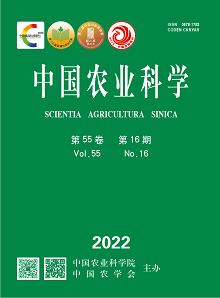【Objective】The total production of maize is the highest among the three staple grain crops in China, ranking second position in the world. The planting area of maize in the three provinces of northeast China accounts for 39% of China, while the investment of resources is relatively low. The purpose of this study is to clarify the temporal and spatial characteristics of resources input and environmental effects for maize production in the three provinces of northeast China. 【Method】 In this paper, based on the life cycle assessment (LCA) method, the reactive nitrogen loss model suitable for maize production in the three provinces of northeast China was used to quantitatively evaluate the resources input (fertilizer, pesticide and diesel oil, etc.) and related environmental risks such as reactive nitrogen losses and GHG emissions of maize production systems in Northeast China from 2007 to 2016. 【Result】The average total fertilizer application rate of maize production in Jilin Province was 400 kg·hm-2, the average yield per unit area was 7 065 kg·hm-2, the average GHG emissions per unit area was 2 965 kg CO2 eq·hm-2, all of the above were the highest in the three provinces, but the carbon and nitrogen footprint was low, and the average reactive N losses per unit area was in the middle level and changed little from year to year. The average nitrogen input of Liaoning Province was 184 kg·hm-2, the average N loss per unit area was 20.8 kg N·hm-2, and carbon and nitrogen footprint was 493 kg CO2 eq·Mg-1 and 3.53 kg N·Mg-1, respectively, all of which were the highest. The per unit yield of 5 966 kg·hm-2, was in the middle level, and the GHG emission did not change much from year to year. The average nitrogen application rate in Heilongjiang Province was 149 kg·hm-2 per unit yield, the average unit area N losses and GHG emissions were the lowest in the three provinces, while the carbon and nitrogen footprint were in the middle level. From 2008 to 2015, the planting area of maize in the three provinces of northeast China increased year by year, with a cumulative increase of 5.73 million hectares. In 2015, the total maize production of the three provinces was the highest, reaching 91.16 million tons, accounting for 32% of the country's ten-year (2007-2016) average production, of which Heilongjiang Province, Jilin Province and Liaoning Province accounted for 13.9%, 11.7%, and 6.7%, respectively. The ten-year average planting area accounted for 30% of the country, of which Heilongjiang Province, Jilin Province and Liaoning Province accounted for 14.7%, 9.3%, and 6.4%, respectively. The ten-year average maize grain yield in the three provinces of northeast China was 6 116 kg·hm-2, and the highest average yield was achieved in 2013, which was 6 824 kg·hm-2. During 2007 to 2016, the fertilizer input of maize production in the three provinces of northeast China showed an overall upward trend, nitrogen fertilizer decreased steadily, while phosphorus and potassium fertilizer increased year by year. From 2014 to 2016, the increase trend of fertilizers rate slowed down sharply and gradually became stable. The ten-year average rate of nitrogen, phosphate and potassium fertilizers were 177, 101, and 70.2 kg·hm-2, respectively. From 2007 to 2016, the pesticide input for maize production in Northeast China showed a steady upward trend, while the diesel input was relatively stable in the first four years, and then gradually increased. During the ten years of maize production in Northeast China, the average rate of pesticide used was 10.2 kg·hm-2, and that of diesel was 94.6 kg·hm-2. The average N losses and GHG emissions per unit area of maize production in 2007-2016 were 19.0 kg N·hm-2 and 2 770 kg CO2 eq·hm-2, respectively. The reactive nitrogen losses per unit area was stable from 2007 to 2016. The average GHG emissions of maize production showed a downward trend in 2007-2008 and 2009-2011, a steady upward trend in 2012-2016, and reached the highest with 3 045 kg CO2 eq·hm-2 in 2016. Ammonia volatilization caused by field application of nitrogen fertilizer was the main way of reactive nitrogen losses in maize production, followed by nitrate leaching loss, and nitrous oxide emission. The main emission sector of GHG emissions was fertilizer production, transportation and field application. During the past ten years, the average nitrogen footprint and carbon footprint of maize production in Northeast China were 3.16 kg N·Mg-1 and 459 kg CO2 eq·Mg-1, respectively. 【Conclusion】The resource inputs and environmental cost of maize production in the three provinces of northeast China were significantly different on the spatial scale. The average fertilizer input of Jilin Province was 124 kg·hm-2 higher than that of Heilongjiang Province, while the GHG emissions were 524 kg CO2 eq·hm-2 higher. In 2007-2016, the nitrogen input for maize production in the three provinces of northeast China ranged from 170 to182 kg·hm-2, N losses ranged from 18.4 to19.4 kg N·hm-2, which played a good demonstration role for the green development of agriculture in China. The carbon and nitrogen footprint of maize production mainly depended on the trade-off between resource input and yield per unit area, noticeably, the nitrogen fertilizer input had a greater impact. The spatial-temporal characteristics analysis of resource inputs and environmental effects for maize production in the three provinces of northeast China contributes to clarify the limiting factors and main controlling factors at present stage, and provides theoretical support for optimizing nutrient management to achieve win-win situation of food security and carbon emission reduction.









